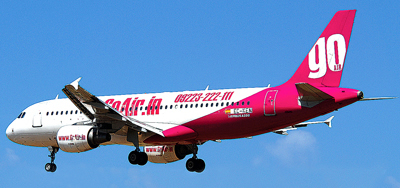INDIAN ARMED FORCES CHIEFS ON OUR RELENTLESS AND FOCUSED PUBLISHING EFFORTS

The insightful articles, inspiring narrations and analytical perspectives presented by the Editorial Team, establish an alluring connect with the reader. My compliments and best wishes to SP Guide Publications.

"Over the past 60 years, the growth of SP Guide Publications has mirrored the rising stature of Indian Navy. Its well-researched and informative magazines on Defence and Aerospace sector have served to shape an educated opinion of our military personnel, policy makers and the public alike. I wish SP's Publication team continued success, fair winds and following seas in all future endeavour!"

Since, its inception in 1964, SP Guide Publications has consistently demonstrated commitment to high-quality journalism in the aerospace and defence sectors, earning a well-deserved reputation as Asia's largest media house in this domain. I wish SP Guide Publications continued success in its pursuit of excellence.
Defying the Odds

The term low fare is gaining more acceptability as airlines take pains to convince customers that there is no short cut in terms of Safety, Reliability and On Time performance.
The term low cost carrier (lcc) has come to be used loosely to include the family of carriers that do not meet the criteria of being a Full Service Carrier (FSC). In other words, an LCC is a carrier that offers generally lower fares than an FSC with the trade-off that one or more traditionally offered customer services are taken away. The LCC idea really originated in the US and then spread to Europe and the rest of the world. The term LCC originally related to the carrier’s lower operating cost structure (as compared to its competitors) and did not differentiate on the basis of operating models. Gradually, however, budget carriers, no-frills carriers, low fare carriers, discount carriers and even value carriers have all come to be clubbed into the LCC bevy, and for the purpose of this article, are referred to as LCCs.
Nowadays, it is fashionable to talk of a loose, often mutually inclusive, trifurcation of the passenger base into the price-, value- and service-seeking customer groups. However, the largest proportion of customers, it can be argued, would hold price as the dominant factor driving their decision-making process. This argument should be seen in the light of the fact that the railways also found that, among the group of persons aspiring to travel by rail in air-conditioned comfort, the demand for 3 Tier AC was the maximum. A somewhat similar logic applies to the air traveller’s psyche. While he would like to be seen as traveling by air, he would like to spend the minimum amount of money doing so—unless his air fare was being paid by someone else (read his employer). And, hence, the lure of the LCC will remain an important consideration for the air traveller. It would be pertinent to analyse the current LCC scenario in India.
Narrowing margins
The disconcerting state of the Indian aviation industry is at a pain level higher than the rest of the world. The reason is the high cost of aviation fuel—around 60 per cent higher than the world average. As a result, the proportion of operating costs that fuel costs represent are also high as compared to the rest of the world; about 50 per cent now in India. As a result of this single major factor, FSCs are being pushed into tough decisions. One such measure is the lowering of tariff to lure more passengers with the result that the gap in LCC and FSC air fares is getting narrower and narrower. Even where base line FSC fares have been retained, promotional schemes under various appetizing names have been dangled under the nose of a shrewd and discriminating customer base.





